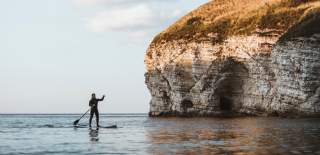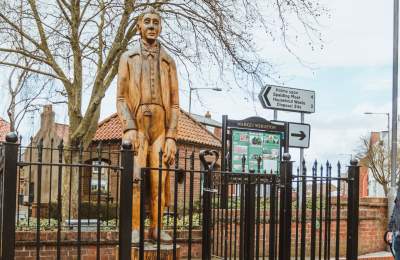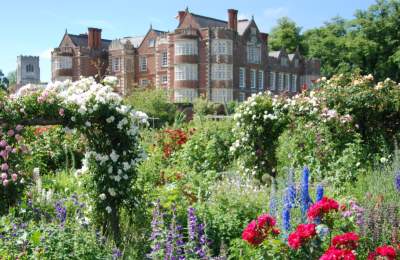East Yorkshire Heritage
The people of East Yorkshire have always been independent, feisty, somewhat rebellious at times, and are still free thinking and innovative, warm and welcoming.
The locals are rightly proud of their heritage. They’ve witnessed Viking invasions, English history changing battles, life changing political movements and record-breaking adventurers.
With connections to the famous, and sometimes infamous, both historic and modern, from abolitionists to women rights, from gun powder plotters to highway men, from fantastical tales and poetry to inspiring artwork.
Watch out for sculptures and displays, blue plaques and memorials that tell the tales of people associated with East Yorkshire.
Politics, poetry and pennies
The market towns of East Yorkshire are fascinating, historic but equally modern, with market days, pubs, tearooms and restaurants, independent shops, museums and galleries, attractions, and events.
- Notable features of the Treasure House art gallery collection include the works of the Beverley born, Royal Academician, Fred Elwell, and of his wife, Mary Elwell. Whilst in Beverley look up as you explore, to spot the paintings of artist Fred Elwell on shop fronts and arcades.
- Mary Wollstonecraft, who lived in Beverley for a while, was a British writer, philosopher, and advocate of women's rights.
- Poet Philip Larkin often visited Beverley including St Mary’s Church, a building which Larkin greatly admired and in which he took delight in discovering the ‘pilgrim rabbit’ said to be the inspiration for the white rabbit in ‘Alice in Wonderland’.
- William Wilberforce, was a Politician famous for being the leader of the movement to abolish the slave trade in the 18th century, was born in hull and schooled in Pocklington.
- William Bradley, known as Giant Bradley, was one of the tallest recorded British men that ever lived, measuring 7ft 9 inches and you can follow in his footsteps around Market Weighton and pose for a selfie next to a full-sized sculpture of the man.
- Visit Driffield at the beginning of January and you will witness the ‘Penny Scramble’ a tradition which has been going on for years, were penny coins would be thrown by shopkeepers for the local children on the first business day of the new year, and continues to this day, although the penny coins are mostly replaced with sweets and chocolate coins nowadays.
Stones, skulls and sustenance
The Yorkshire Wolds is a gentle crescent shape of rolling hills extending from Filey to Hessle near the Humber Bridge with a history of agriculture and settlements that go back thousands of years.
- Rudston Monolith is the tallest prehistoric standing stone in Britain at almost 8 metres high and weighing 26 tonnes. How it arrived on site is lost in time, however, local folklore says the Devil hurled a large spear at the newly built Rudston church in anger, but thanks to divine intervention, the weapon missed, and landed in its current position.
- If you want to discover the ‘Birthplace of Christianity in the north’ you’ll find it at Goodmanham. The present location of All Hallow’s Church was where King Edwin of Northumbria converted to Christianity in 627AD
- The astonishing Nunburnholme Cross can be viewed inside the village’s St James Church. Discovered during late 19th century restoration, the cross dates back to before 900AD and is of international significance.
- Kiplingcotes Derby is reputedly the oldest flat-race in the UK, with records dating back to 1519 and has taken place on the third Thursday in March ever since, with no exceptions, although sometimes with just the one competitor. Its archaic rules means that often the second placed rider gets more prize money than that of the winner.
- In the picturesque village of Welton is the Green Dragon, a 17th century coaching inn, where Highwayman Dick Turpin, using the alias John Palmer, was arrested for horse theft, before being unmasked as the infamous villain. Today cheerful and friendly surrounding will ensure your visit is more relaxed.
- According to legend, the skull of the second Baronet Boynton Sir Henry's youngest daughter Anne is bricked up in the Great Hall of Burton Agnes Hall. It is reputed to be a screaming skull, and to return to the hall whenever it is removed.
- The 44 Mile Circular Wold Rangers Way, which starts in Driffield, is a great way to walk in the footsteps of a few of the better-known ‘Wold Rangers’, people who were part of a nomadic group, who perhaps would be considered eccentric nowadays. They were honest and hardworking, living off the land, travelling from farm to farm, seeking work and sustenance on the Yorkshire Wolds.
- More recently, David Hockney, a world-renowned artist, spent some time in the Yorkshire Wolds and Bridlington, developing a series of artwork of the area. David said: ‘East Yorkshire, to the uninitiated, just looks like a lot of little hills. But it does have these marvellous valleys that are caused by glaciers, not rivers, so it’s unusual’. The East Yorkshire inspired artwork series is often exhibited throughout the world.
Fishing, follies and flyers
The East Yorkshire coastline offers some amazing views and great walks all along from the cliffs and coves of Flamborough Head to the sweeping, open sands at Spurn Point.
- Along the coast, the traditional fishing fleet of Bridlington Harbour is internationally famous for its sustainable fishing and landing Bridlington Bay shellfish, including lobster and crab. Now found at local fisheries, such as Arnold’s in Bridlington, but also on the menu at many restaurants for you to try.
- There is an annual celebration of the local sailing cobbles, with local folk and sea songs, fiddle tunes with traditional shanties and clog dancing along with a variety of stalls at the Bridlington sailing coble festival. You can even book a trip out on a historic fishing Cobble from Bridlington’s working harbour.
- The Gansey Girl is a sculpture on the Harbour wall dedicated to the fishing families whose very livelihood was dependant on the bounty of the North Sea. Each family having their own knitted Gansey pattern, acknowledging the dangers of a life at sea. You can visit the Harbour Heritage Museum to learn more about Bridlington’s fishing heritage.
- A centuries old tradition is kept alive by the Flamborough Longsword Dancers. Every Boxing Day they perform around the village and headland in their distinctive blue gansey, white trousers, cloth cap and neckerchief. Still taught in the local village school, the longsword dance steps are thought to represent how the locals would mend their fishing nets with needles. The longsword dance is celebrated with the sword dancers sculpture overlooking South Landing at Flamborough Headland.
- The caves along Flamborough have a history of smugglers, with tales of various goods being stored and traded from small, damp, inconspicuous caves. Further down the coast, Hornsea was also noted for its smuggling with tales that even the local church warden was involved in the illicit trading.
- Jack and Kit Wright were members of the failed gunpowder plot of 1605, a conspiracy to blow up James I and the House of Lords. Locals quietly celebrate the two notorious rebels who were born and raised at Plowlands Farm in Welwick, and you will find an 8ft statue of the four plotters commemorating East Yorkshire's links to the Gunpowder Plot, including Guy Fawkes.
- Bettison’s Folly in Hornsea - Bettison, built the folly in his garden so his manservant would ascend the tower at the usual time Bettison returned from work in Hull and he would run down the tower to ensure "dinner was served" as the master walked into the house. This is one of the follies to be spotted along the coast.
- JR Tolkien, writer, spent time in the Hornsea area whilst recuperating during the first World War and the area is widely believed to be the inspiration for his stories of high fantasy, including The Hobbit and The Lord of the Rings. While films and TV series explore storylines and characters, East Yorkshire’s landscape is still the home of much of Tolkien’s inspiration. During his time in East Yorkshire during 1917-1918 he explored many of the towns and villages along the East Yorkshire Coast.
- Amy Johnson, aviator was the first woman to fly solo from London to Australia. There are displays of her extraordinary life at Sewerby Hall and Gardens
Fishing, follies and flyers
The East Yorkshire coastline offers some amazing views and great walks all along from the cliffs and coves of Flamborough Head to the sweeping, open sands at Spurn Point.
- Along the coast, the traditional fishing fleet of Bridlington Harbour is internationally famous for its sustainable fishing and landing Bridlington Bay shellfish, including lobster and crab. Now found at local fisheries, such as Arnold’s in Bridlington, but also on the menu at many restaurants for you to try.
- There is an annual celebration of the local sailing cobbles, with local folk and sea songs, fiddle tunes with traditional shanties and clog dancing along with a variety of stalls at the Bridlington sailing coble festival. You can even book a trip out on a historic fishing Cobble from Bridlington’s working harbour.
- The Gansey Girl is a sculpture on the Harbour wall dedicated to the fishing families whose very livelihood was dependant on the bounty of the North Sea. Each family having their own knitted Gansey pattern, acknowledging the dangers of a life at sea. You can visit the Harbour Heritage Museum to learn more about Bridlington’s fishing heritage.
- A centuries old tradition is kept alive by the Flamborough Longsword Dancers. Every Boxing Day they perform around the village and headland in their distinctive blue gansey, white trousers, cloth cap and neckerchief. Still taught in the local village school, the longsword dance steps are thought to represent how the locals would mend their fishing nets with needles. The longsword dance is celebrated with the sword dancers sculpture overlooking South Landing at Flamborough Headland.
- The caves along Flamborough have a history of smugglers, with tales of various goods being stored and traded from small, damp, inconspicuous caves. Further down the coast, Hornsea was also noted for its smuggling with tales that even the local church warden was involved in the illicit trading.
- Jack and Kit Wright were members of the failed gunpowder plot of 1605, a conspiracy to blow up James I and the House of Lords. Locals quietly celebrate the two notorious rebels who were born and raised at Plowlands Farm in Welwick, and you will find an 8ft statue of the four plotters commemorating East Yorkshire's links to the Gunpowder Plot, including Guy Fawkes.
- Bettison’s Folly in Hornsea - Bettison, built the folly in his garden so his manservant would ascend the tower at the usual time Bettison returned from work in Hull and he would run down the tower to ensure "dinner was served" as the master walked into the house. This is one of the follies to be spotted along the coast.
- JR Tolkien, writer, spent time in the Hornsea area whilst recuperating during the first World War and the area is widely believed to be the inspiration for his stories of high fantasy, including The Hobbit and The Lord of the Rings. While films and TV series explore storylines and characters, East Yorkshire’s landscape is still the home of much of Tolkien’s inspiration. During his time in East Yorkshire during 1917-1918 he explored many of the towns and villages along the East Yorkshire Coast.
- Amy Johnson, aviator was the first woman to fly solo from London to Australia. There are displays of her extraordinary life at Sewerby Hall and Gardens
Today, you’ll find East Yorkshire locals are very friendly and approachable, so if you need any help, or just need to know where the best Fish and Chip shop is (opinions may vary, so be prepared for some debate), don’t hesitate to ask!
Searching for something
So, what does visiting East Yorkshire mean to you?
From spotting colourful Puffins to building the best sandcastles, wandering through peaceful rolling valleys to browsing independents in bustling market towns, Get inspired with our selection of #visiteastyorkshire photos and share your East Yorkshire visit on Instagram.




